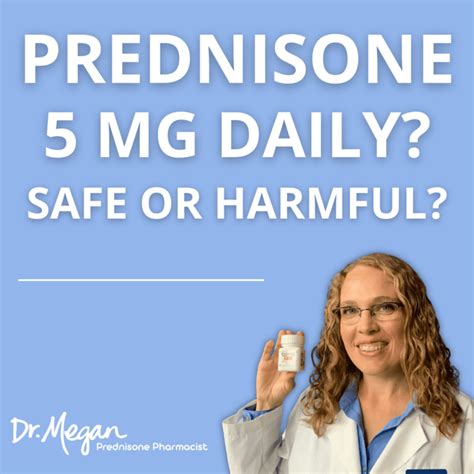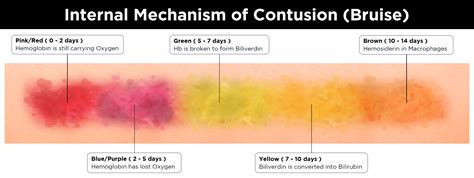The use of prednisone, a synthetic corticosteroid, is a common treatment approach for various medical conditions, including inflammatory diseases, autoimmune disorders, and certain types of cancer. When considering the potential harm of 5 mg of prednisone daily, it’s essential to understand the context in which this medication is being used, the duration of treatment, and the individual’s overall health status.
What is Prednisone?
Prednisone is a corticosteroid that works by decreasing inflammation in the body. It is often prescribed for its potent anti-inflammatory and immunosuppressive properties. The medication can be used to treat a wide range of conditions, such as asthma, rheumatoid arthritis, and lupus, among others.
Potential Side Effects of 5 Mg Prednisone Daily
While prednisone can be effective in managing various health issues, like any medication, it comes with potential side effects. The severity and likelihood of these side effects can vary depending on the dose and duration of treatment. A dose of 5 mg daily is considered relatively low, and the risk of significant side effects is lower compared to higher doses. However, potential side effects can include:
- Weight Gain: Increased appetite and subsequent weight gain are common, especially with higher doses.
- Mood Changes: Mood swings, anxiety, and insomnia can occur due to the hormonal changes induced by prednisone.
- Bone Density Loss: Long-term use can lead to osteoporosis, as prednisone can interfere with the body’s calcium regulation, leading to bone loss.
- Increased Blood Sugar: Prednisone can cause an increase in blood sugar levels, which is particularly concerning for individuals with diabetes.
- Skin Changes: Thin skin, bruising, and poor wound healing can be side effects of long-term prednisone use.
- Eye Problems: Cataracts and glaucoma are potential risks with prolonged use.
Minimizing Risks
To minimize the risks associated with 5 mg of prednisone daily, it’s crucial to:
- Follow the Prescribed Dosage: Adhere strictly to the dosage and treatment duration recommended by your healthcare provider.
- Monitor Health Changes: Regularly monitor your blood pressure, blood sugar levels, and bone density, especially if you’re on long-term therapy.
- Maintain a Healthy Lifestyle: Engage in regular exercise, follow a balanced diet, and avoid smoking and excessive alcohol consumption to mitigate potential side effects.
- Regular Check-ups: Schedule regular appointments with your healthcare provider to assess the effectiveness of the treatment and manage any side effects.
When to Seek Medical Attention
If you experience any of the following while on 5 mg of prednisone daily, seek medical attention:
- Severe mood changes or depression
- Vision problems
- Signs of infection (e.g., fever, chills)
- Severe stomach pain
- Difficulty breathing
- Chest pain or rapid heartbeat
Conclusion
While 5 mg of prednisone daily can be an effective dose for managing certain health conditions, it’s essential to be aware of the potential risks and side effects. By understanding these factors and working closely with your healthcare provider, you can minimize the harmful effects and maximize the therapeutic benefits of prednisone. Always consult with a medical professional before starting, changing, or stopping any medication, including prednisone.
What are the common side effects of taking 5 mg of prednisone daily?
+Common side effects can include weight gain, mood changes, increased blood sugar levels, and potential bone density loss. However, the severity of these side effects can vary depending on the individual and the duration of treatment.
How can I minimize the risks associated with taking prednisone?
+To minimize risks, follow the prescribed dosage, maintain a healthy lifestyle, monitor your health changes regularly, and attend scheduled check-ups with your healthcare provider.
When should I seek medical attention while taking prednisone?
+Seek medical attention if you experience severe mood changes, vision problems, signs of infection, severe stomach pain, difficulty breathing, chest pain, or a rapid heartbeat.
In conclusion, the decision to take 5 mg of prednisone daily should be made under the guidance of a healthcare professional, taking into account the individual’s specific health needs and the potential risks and benefits associated with the medication. Regular monitoring and a proactive approach to managing side effects can help ensure that the therapeutic benefits of prednisone are maximized while minimizing its harmful effects.



